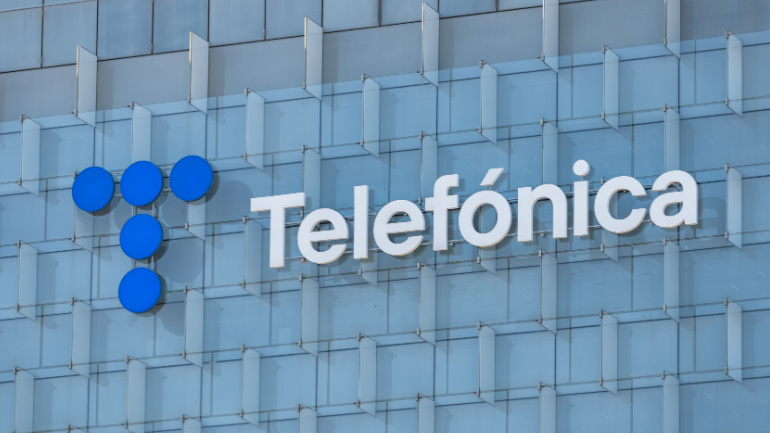Indosat Ooredoo Hutchison’s recent acquisition of MNC Play marks a strategic expansion into the fibre-to-the-home market, promising new options for customers and advancement in Indonesia’s digital transformation. Inclusion of MNC Play’s fibre optic network into the IOH portfolio fortifies their position in the market.
Telefónica, the notable Spanish telecom giant, is hinting at sizable workforce reductions. Yet, figures conflict between reports, leaving uncertainty about the affected employee count. Amidst global economic instability, these layoffs align with Telefónica’s strategic shift to prioritize cash generation and operational excellence. Such a move echoes other industry leaders’ recent job cuts, suggesting a broader trend.
Nippon Telegraph and Telephone Corporation (NTT), NTT DOCOMO, and SKY Perfect JSAT join forces with Amazon’s Project Kuiper to turbocharge Japan’s telecom services. The partnership seeks to leverage Project Kuiper’s Low Earth Orbit (LEO) satellite broadband network, offering a breadth of connectivity to enterprises and government entities despite the nation’s geographical challenges. The strategic emphasis is on utilizing Kuiper’s capabilities for redundant communication networks, covering even hard-to-reach locations ramping up continuity of services after emergencies and natural disasters.
As Portugal’s telecom operator Nos marks two years of 5G services, it declares readiness to launch services on a new 5G standalone infrastructure. Despite the slower than expected progress, Nos’s move signifies a key contribution to the sector. Intriguingly, the viability and potential benefits of this new infrastructure remain a matter of debate. With collaborations with Nokia and Ericsson, Nos envisions a surge in ultra-low latency services.
In an ambitious collaboration, Ericsson is partnering with Concordia University, the University of Manitoba, and the University of Waterloo to bolster cybersecurity for 5G networks, utilizing AI and automation solutions. Their objective: foreseeing and mitigating network breaches for both current 5G and upcoming 6G networks while navigating increasing network stress and complex security requirements.
In the wake of a profound digital transformation, businesses are strategically navigating the evolving landscape of generative artificial intelligence (genAI), propelling them into a new era of adaptability and innovation. The surge in genAI-related job postings, as reported by GlobalData’s Job Analytics Database, reflects a growing commitment among companies to stay relevant and competitive in this dynamic environment.
Cellnex, the infrastructure titan, is considering the sale of tower assets in Austria and Ireland in a push to offload financial burdens and deepen roots in the European market. This shift in focus, triggered by last year’s UK Hutch deal completion, aims for organic growth, investment-grade rating, and debt management via strategic divestments. CEO Patuano hints future cash generation post 2027 and potential interest in bidding for Deutsche Telekom’s GD Towers business, crafting a more efficient operational blueprint.
Vodafone’s potential sale of its Italian operations to Fastweb amid TIM’s anticipated network sales sets the scene for a transforming Italian telecom landscape. Amid these changes, Fastweb’s potential merger or acquisition of Vodafone appears rational due to current market dynamics. Nonetheless, political wrangling, rival suitors, and ever-changing regulatory landscapes act as potential roadblocks to this merging of forces. The news underlines the need for strategic shifts amongst Italy’s leading telecom operators amidst significant changes.
In an intriguing shift, Telefónica, the Spanish telecom titan, is exploring potential profits from selling its Tech unit, stirring up future predictions. Insider details reveal engagement with multiple financial institutions and a goal to retain majority control, a factor that might affect investor incentive. Amid this, the Tech division’s impressive financial growth and its strategic significance in enterprise technology are undeniable.
Switching to a cloud-based VoIP system has the potential to cut CO2 emissions from telephony equivalent to removing 22 million cars from the road. In an era prioritizing sustainability, traditional landlines contribute to significant carbon footprints and electronic waste. VoIP, utilizing the internet’s power, eliminates physical infrastructure, reduces electronic waste, and operates efficiently. Beyond resource conservation, VoIP’s energy efficiency, support for remote work, and future innovations, including AI optimization and renewable energy sources, position it as a sustainable solution. Join the movement for a cleaner world with every VoIP-powered conversation—a pledge to the planet.













